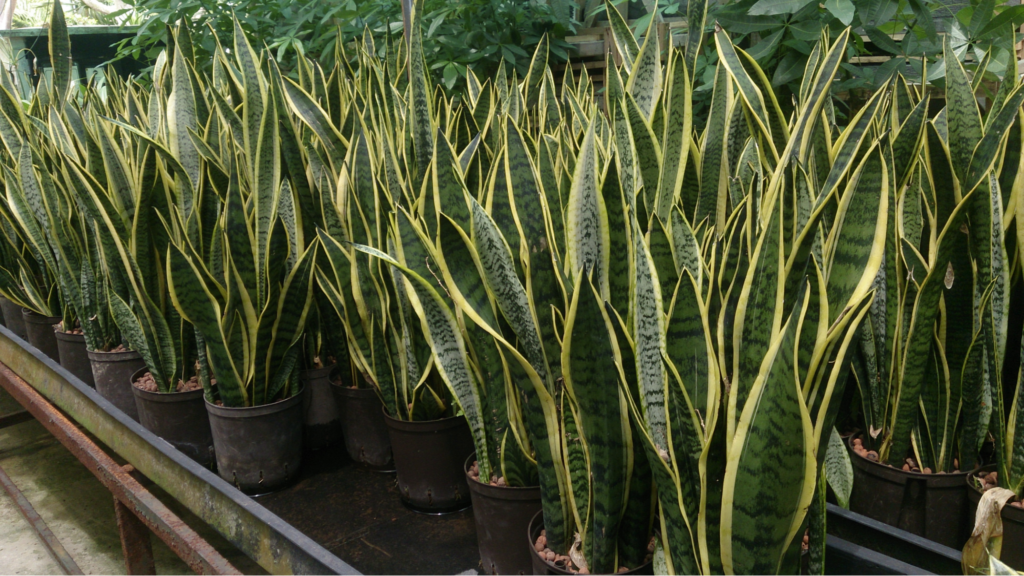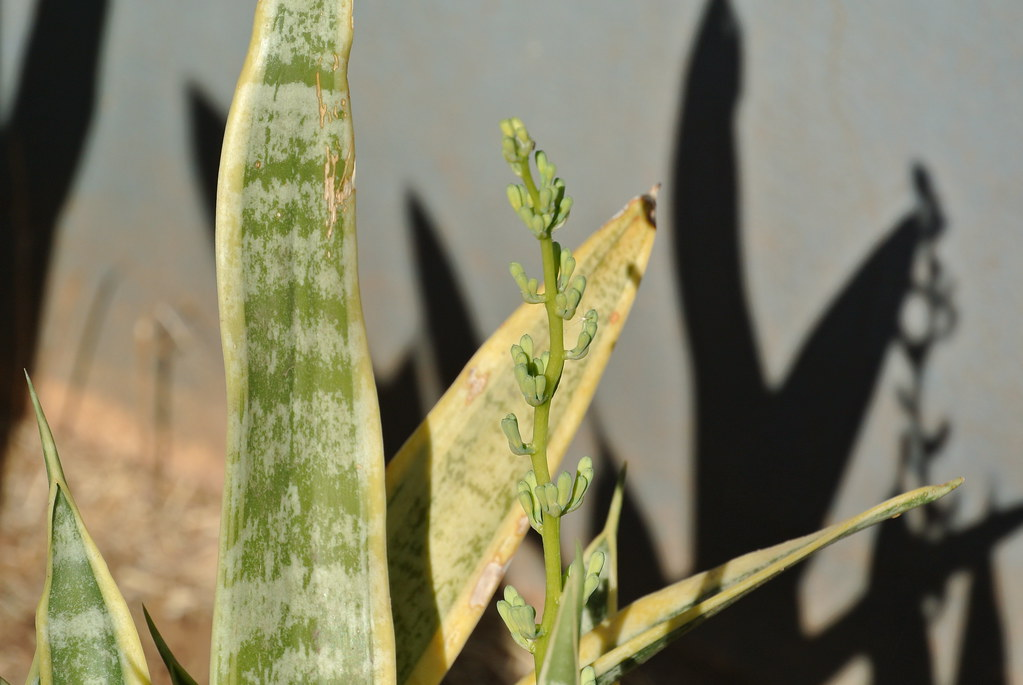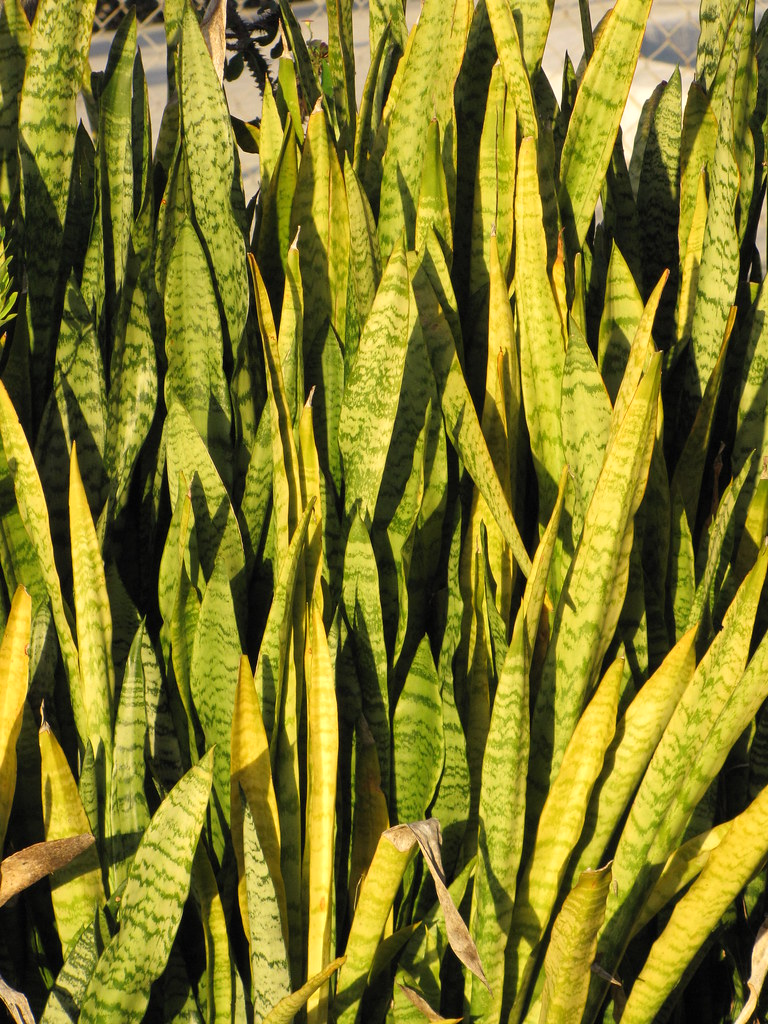Snake plants, which are scientifically known as /*, are distinguished by the yellow hue that runs down the sides of their large, upright leaf blades. Unfortunately, if Snake Plants are not properly cared for, the leaves can become yellow. Significant discolouration is a key indicator of poor upkeep and should be fixed as immediately as feasible. But why does it yellow, and how can you stop it? Read on and find out how to save a snake plant with yellow leaves.

Overwatering, imbalance in minerals and nutrients, improper soil drainage, and fluctuating cold temperatures are the main causes of a snake plant turning yellow. Repot the plant in order to fix the yellowing, maintain temperatures between 70 and 90 degrees Fahrenheit, and remember to only water when the top two to three inches of potting soil feel dry.
Do not worry any more because we will assist you in determining the source of your attractive plant’s yellowing leaves, and, of course, we will also provide a solution. It seems like a win-win circumstance, right?
To learn more about how to keep your magnificent Snake Plants from having yellow leaves, continue reading this article.
Why Are My Snake Plant Leaves Turning Yellow?

Yellow Snake Plant leaves could be a symptom of an imbalance in their environment or in the care they are receiving. The most prevalent causes of yellow plant leaves include inappropriate watering which causes root rot, a lack of moisture, poor lighting, poor nutrition, temperature, and old age.
However, yellowing foliage could also be a result of transplant stress as well as poor fertilization, pests, and diseases. Depending on the pattern of yellowing, you can pinpoint the issue that’s troubling your plants and then properly and successfully cure it.
1. Watering Problems
The optimum time to water Snake Plants is when the top one to two inches of the soil is dry and cracked. You’ll get into trouble if you just water it whenever you feel like it and without a pattern.
It is more likely that too much water is to blame if you feel that your plant is yellowing as a result of hydration issues. Below are the distinctions between yellow leaves caused by overwatering and yellow leaves caused by underwatering, in case you’re unsure about your culprit.
Overwatering
Your Snake Plant’s leaves yellowing are another typical sign of overwatering. Yellowing frequently starts on the bottom leaves and moves up in a pattern. If you notice this pattern, the issue with your plant is probably the result of overwatering.
If you’re still unsure, you might look at the symptoms listed below that frequently accompany overwatering of plants:
- leaf drooping despite wet soil
- occurrence of brown spots on leaves
- soil-borne rot smell (which is an indication of root rotting)
Even while Snake Plants prefer their soil to always be slightly moist, a waterlogged state is not ideal. Your current pot might be better replaced with a smaller one with greater and better drainage holes. Replace the soil right away if it doesn’t drain well.
Remember that the timing of your plant watering ultimately depends on the weather. Watering needs to be reduced in the winter and during times of low temperatures or light. Water your plant only when the top layer of soil becomes dry.
Underwatering
A plant that has been underwatered is considerably simpler to identify and repair. This is because the yellowing follows the same pattern as your overwatered plant, ascending from the bottom leaves. However, in this instance, browning leaf tips and crispy leaf edges always accompany yellowing foliage.
A plant that needs water will appear pretty unhealthy and droopy, so you can tell. Additionally, the soil all around your plant will be dry and cracked.
Observe your watering and develop a routine for doing it to solve this issue. If you see that the soil dries out quickly, look at the surrounding conditions. For example, you might need to relocate your plant to an area with average temperature and filtered light.
Related: 21 Types of Sansevieria – Indestructible, Exotic, and Elegant Air Purifiers
2. Humidity Problems
The Snake Plant’s leaves yellowing may possibly be due to a lack of humidity. Humidity levels can be extremely low, especially indoors, causing your leaves to turn brown or even die.
There are many methods for raising humidity in a dry area. You can regularly mist your plant throughout the day. To boost the moisture level around the plants, you can either bunch the plants together or put them in a tray with water and pebbles.
Try looking for a modest humidifier to help you keep the proper humidity level for your plants if these still don’t solve the issue.
3. Light Problems

As a general rule, plants perform best in lower light levels or even with artificial illumination if they are entirely green or green with white variegations. However, the more colors and variegations present, the more light they require to grow and flourish in a healthy manner. So depending on the variety of Snake Plants you have, you must also adjust accordingly.
Low-Light Conditions
Although Sansevierias are known to survive low light levels, indirect bright light is better for them. These leaves will turn yellow if the low-lighting situation persists, beginning with the lower leaves.
Consequently, because the water does not evaporate as quickly in low light environments as it does in high light environments, there is also a risk of overwatering your plant.
Put your Snake Plant in a spot with enough light to solve this issue. For example, it might be next to a window with a sheer curtain if it’s inside.
Too Much Light Conditions
Keep in mind that too much direct sunlight will scorch the foliage and cause the leaves of your plants to curl. In addition, if your plant is exposed to intense direct light for an extended period of time, Snake Plant’s leaves can also develop a yellow discoloration.
In the summer, this is to be expected, when the sun’s intense rays blister the exposed leaves of your snake plants. If the summer heat is extremely intense, the Snake Plant leaf will also begin to wrinkle and curl.
With exposure to strong, direct sunshine, a snake plant’s leaf variegations and natural patterns deteriorate. If photodamage is the problem, however, just the leaves that are facing windows directly will become yellow in indoor Sansevierias.
4. Temperature Problems
Snake Plants can be sensitive to temperature variations. A rapid change in temperature or a period of adverse weather will undoubtedly stress your plants, which frequently results in leaf yellowing, wilting, leaf damage, and even a halt in growth.
When growing plants indoors, take into account any drafts your plants may experience from appliances like heaters and air conditioners or even drafty windows. To prevent yellow leaves, keep your plants away from these areas and situate them far away.
The ideal temperature range for your Sansevieria plants is between 70 and 95 degrees Fahrenheit. Your plants will respond with stress if the temperature falls below 45 degrees Fahrenheit or exceeds their ideal range.
Related: Snake Plant (Sansevieria): How To Get Your Plant To Flower and More
5. Transplanting Problems
Although removing and replacing plants can be a regular gardening task, doing so can stress the plants, thus it must be done carefully and at the appropriate time. In addition, plants, like your Snake Plants, become stressed when they are incorrectly replanted.
Snake Plants typically repot quite readily since they easily adapt to new environments. However, if the transplanting is done incorrectly, your plants may eventually wilt and develop yellow foliage.
You make sure that the new pot is only marginally bigger than the old pot to prevent this from happening. Use a soil mixture that drains properly. Having a mixture of two parts garden soil and one part perlite is advised.
6. Fertilization Problems
Snake Plants are slow-growing plants, therefore they do not require large feedings; instead, just modest amounts of fertilizer are required for them to flourish. However, issues with fertilization might also be the cause of Snake Plants turning yellow.
Nutrient Deficiency
Yellowing of the leaves is another indicator of nutrient insufficiency, particularly if they have not been fed or repotted for years. Generalized yellowing and a general loss in leaf color are caused by a lack of iron and nitrogen. On the other side, a lack of potassium and phosphorus results in a yellow and brown spotted discoloration on the leaves.
You must adjust your fertilizer schedule if you think nutrient insufficiency is the issue to keep your snake plant healthy. Once the correct amount of nutrients is given to the plant, it should be able to recover and become a healthy snake plant once more. Expect the damaged foliage to take some time to recover.
Overfertilization
Although nitrogen insufficiency can result in yellowing leaves, overfertilization is more frequently to blame. However, this issue only arises when the roots have already been excessively salted as a result of fertilizer overuse.
Inorganic salt leftovers from fertilizers are left in the soil. The root toxicity causes the leaf to turn yellow in later stages. You should stop fertilizing in the fall and winter to lessen this issue. Your plants’ limited growth during this time makes them more vulnerable to overfeeding.
It is advised to only feed plants once or twice a year, during their active growing period. spring till the end of the summer. As they are aggressively expanding at this time, your plants require a boost. Avoid overfeeding your Snake Plants during the winter season.
7. Pests Problems
Pests pose a threat to all indoor plants, including your Snake Plants. You may have a pest issue if you notice sickly, mottled, yellow leaves on your plants, or leaves with erratic holes.
Unfortunately, small pests like aphids, mealy bugs, and spider mites can harm Snake Plants. If your plants are infested with any of these tiny predators, it could be fatal.
You can quickly observe these pests on your plants. Since they congregate to feed on the plant juices, aphids are simple to find. Mealybugs typically appear as small cotton balls on leaves or stalks. The worst type of mites are spider mites since they are obscure. However, if you notice web-like formations on your plants, that is a surefire sign that they are infested with spider mites.
The yellowing of the leaves is a result of these pests sucking up the plant juices. Use horticultural oils, such as neem oils, or insecticides to get rid of them right away. It takes a lot of endurance and patience, but it will all be worthwhile in the end.
8. Disease Problems
In addition to pest issues, Snake Plants are vulnerable to diseases, whether they are bacterial, fungal, or viral in origin. Fusarium and Pythium infection, which affects Snake Plants worldwide, are the most prevalent diseases.
A sign of these fungal diseases is yellowing of the leaves. The larger, spreading black patches on the leaf surfaces, however, are the most noticeable symptoms. Keep in mind that overwatered plants are essentially the only ones who experience this.
If this is the root of the issue with one of your plants, separate it right away from the others. Remove the damaged leaves and dispose of them carefully. Give your plant the attention and care it needs to slowly nurse it back to health.
9. Old Age
Old leaves must wither as the plant grows in order to make room for new, healthier ones. It is not a cause for concern if your plant occasionally has fading leaves at the bottom; this is typical.
As the seasons change, you would often see more of the snake plant’s leaves yellow in the autumn and winter, during the colder temperatures. The plant must sacrifice things on its own in order to sustain its general health in conditions of decreased light and warmth.
Related: Hello, Why Is It Yellow? 5 Reasons Why Your Sansevireia Is Changing Color
Frequently Asked Questions(FAQs)
Should I trim the snake plant’s yellow leaves?
You can trim the afflicted snake plant leaves’ yellowing leaf tips out. The cut leaves can re-grow longer given the right conditions for light, temperature, and hydration. Keep in mind that the sharp points that make them stick out among other leaves won’t grow back.
Consider trimming the yellow borders into pointy tips if this messes up your aesthetics. The new leaves will begin to resemble the other, wholesome leaves as they mature. As an alternative, you can cut the harmed leaves off present on the bottom.
Can the yellow leaves of snake plants revert to green?
After you make the necessary changes to your personal watering routine, sunlight exposure, and temperature conditions, your snake plant may turn green once more. However, if the snake plant’s yellowing is severe root rot’s advanced stage, it might be too late to preserve it.
The few surviving leaves which are still viable can be used to propagate new plants, so there is still some good news.
How do you save a yellowing snake plant?
By repotting with a well-draining soil mixture, watering only when the soil dries out, and giving ideal temperature and light conditions, you can save your yellowing snake plant. If you want to save and revive your snake plant, give it an iron supplement and remove any extra salts from the soil.
Final Thoughts
There are numerous reasons why the leaves of your Snake Plants turn to yellow. Examine your plant and the surroundings it is in. The common causes of water, light, moisture, temperature, and pests should be looked into first.
However, never forget that no plant is ever completely healthy all the time, regardless of the cause. It’s common for leaves to yellow every now and again. Even the best plant scientists and horticulturists cannot always have a plant that is in perfect health.
To know more about Sansevierias, you may read our article on propagation of these gorgeous Snake plants. You can also meet some rare Snake Plant varieties that are surely must-haves in your collection.
Editor’s Recommendations
Spider Plant: 12 Stunning Varieties You Can Get For Your Home
Begonia Maculata Polka Dot: The Best Care, Propagation, and Watering Guide
Hoya Retusa: The #1 Most Informative Care, Propagation, and Watering Guide







